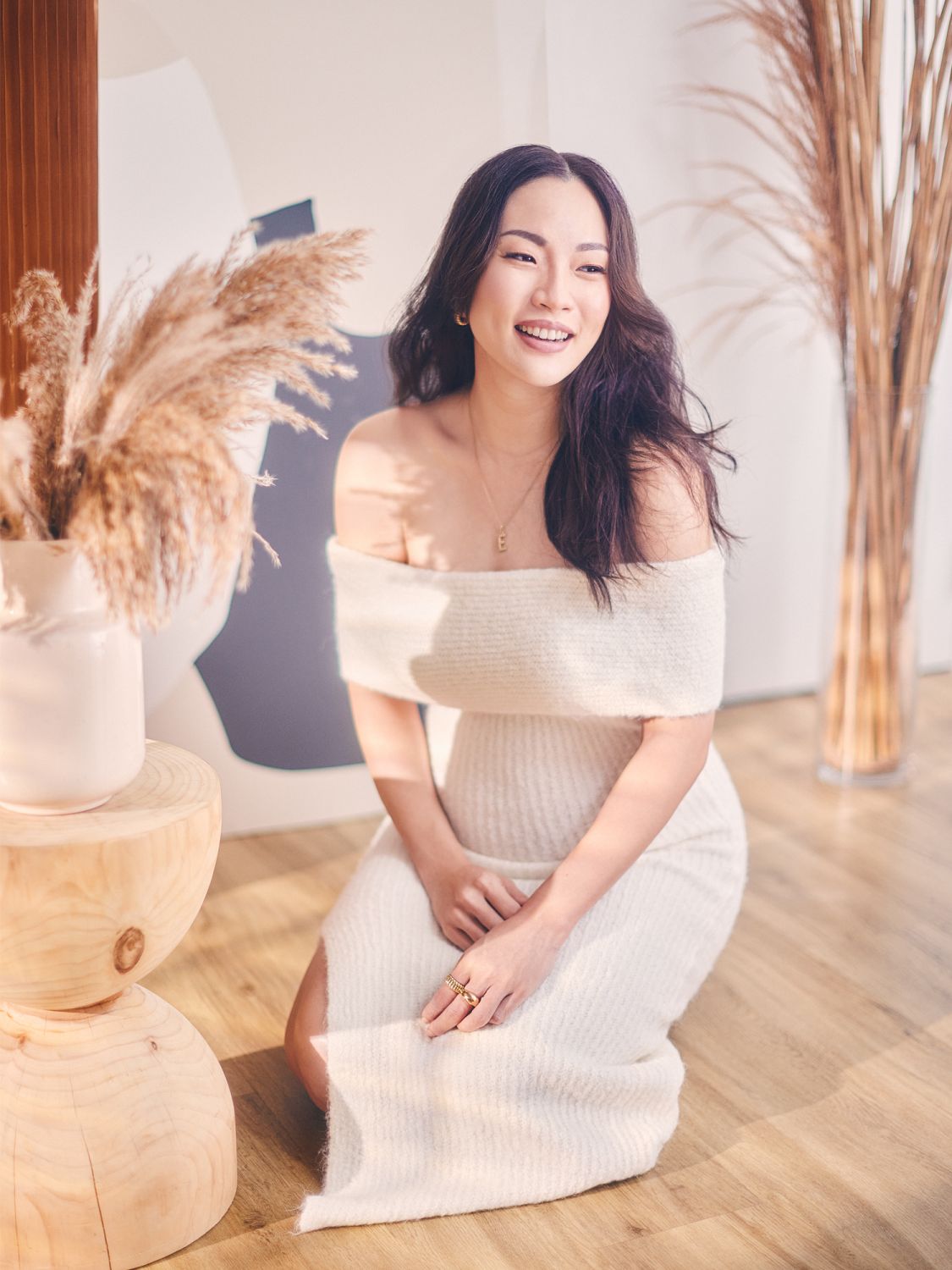Our Second Nature founder Velda Tan candidly shares the most challenging aspects of her motherhood journey—from her experience with infertility and IVF to finding strength after a miscarriage
When asked if she’s looking forward to her second child, Velda Tan’s answer catches me off-guard. “Not really,” she admits. We’re about 40 minutes into our interview, and frankly, I expected a different answer, given how she had just detailed her lengthy fertility journey to me.
In response to my perplexed look, Tan chuckles. “It’s not that I’m not looking forward to welcoming my baby, it’s just that I’m not very keen on going through the whole newborn phase again,” she clarifies, candidly. “For me, the most challenging part of motherhood so far is the whole breastfeeding journey and having to juggle work and taking care of a newborn whilst not being able to feel yourself.”
Don't miss: Career and Motherhood? The Women of Singapore’s F&B Scene Share How They Do It All
Tan certainly has her hands full with Ellery, her four-year-old daughter, as well as her day job as the founder and creative director of local lifestyle label Our Second Nature. Currently five months pregnant with her second child, nothing seems to be slowing her down—minutes prior to our interview in her office, she wrapped a morning shoot for her label’s new collection, and just the day before, we had met for a four-hour shoot for this story.
While she’s bracing herself for the hamster wheel that comes with the newborn phase, Tan’s excited “for Ellery to finally have someone to call her sibling”, having always desired a big family for herself and experiencing a “very lovely childhood” with her two sisters. “I think that’s probably the main reason why I wanted more children,” she says. “I started wanting four, but along the way, that dream changed.”

“Along the way”, for Tan, spans 10 years of marriage, three years of actively trying for a first baby, and nearly two years of trying for a second. “It’s been a really long journey,” she reflects thoughtfully. Tan tied the knot in 2012 at 25, but had never seriously considered a child in the early years of her marriage. Three years on, the couple realised that while they had not been intentionally planning to conceive a child, things were also oddly quiet. “Nothing was happening, and that’s when I decided to go to a gynaecologist to get a checkup just to make sure that everything was working fine.”
The trip to the gynaecologist would change her life as it is. Tan discovered that she had Polycystic Ovarian Syndrome (PCOS), a common endocrine disorder that can result in an infrequent release of eggs. According to Singapore’s Advanced Centre for Reproductive Medicine (ACRM), the hormonal disorder affects 10 to 15 per cent of women in the reproductive age group. While the symptoms vary, PCOS can cause irregular periods, obesity and infertility.
“When the gynae diagnosed me, she said that it's going to be very hard for me to conceive without any assistance,” Tan recalls. “PCOS affects everyone differently, but for me, it specifically means that I don’t have a regular ovulation cycle and my eggs are unable to develop and mature.” Tan’s doctor recommended she immediately start on medicated cycles, where she would take oral medication to help stimulate egg growth and to allow the eggs to grow to maturity.
Read more: PCOS 101: 5 Things You Should Know About Polycystic Ovary Syndrome


